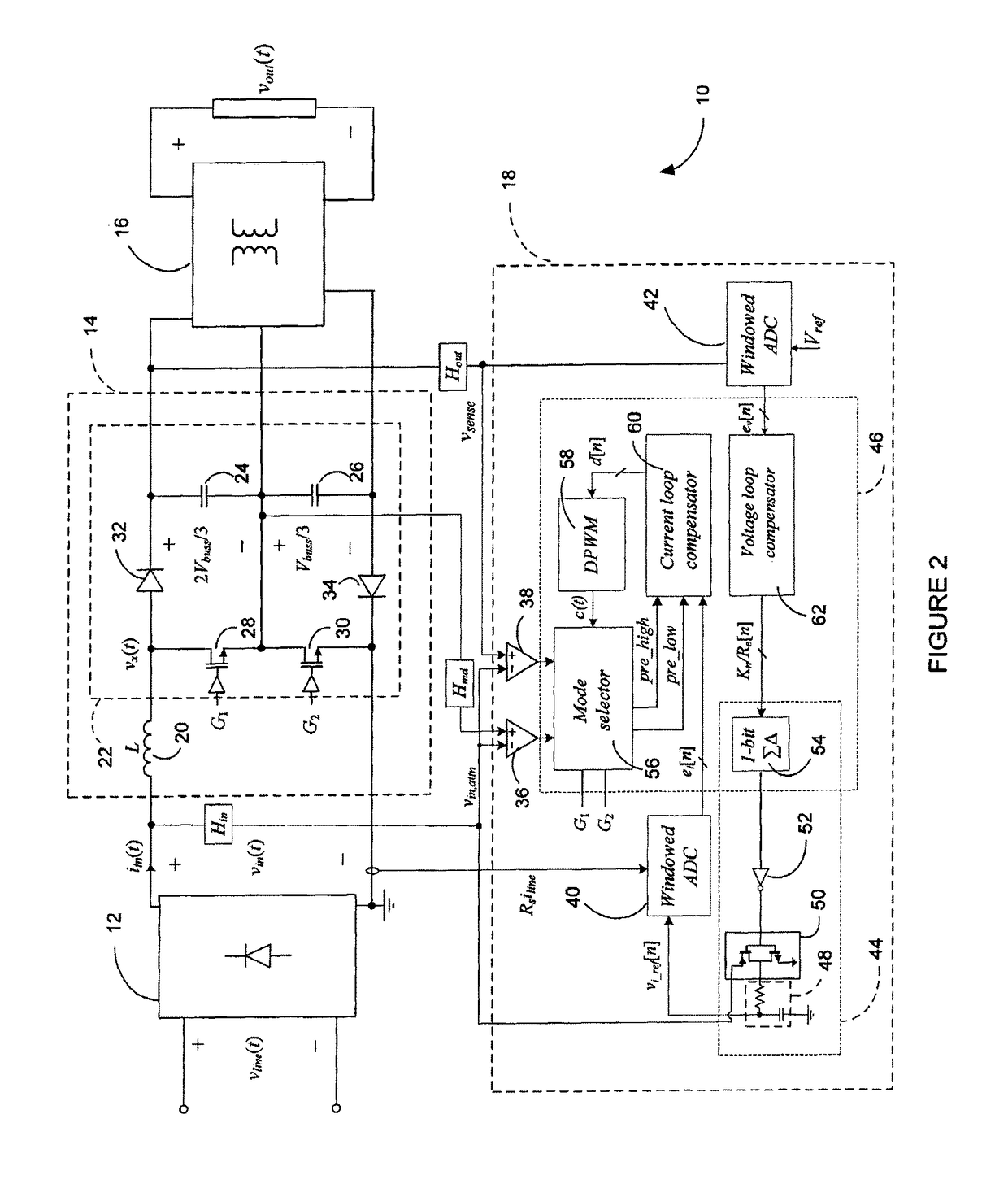System and method for regulation of multi-level boost based rectifiers with power factor correction
a technology of boost-based rectifiers and power factor correction, which is applied in the direction of energy industry, efficient power electronics conversion, electric variable regulation, etc., can solve the problems of preventing the use of weight and volume sensitive applications of overall systems, affecting the cost of overall systems, and non-negligible core losses, so as to reduce the maximum voltage swing value of boost inductors, and reduce the volume and losses of boost inductors
- Summary
- Abstract
- Description
- Claims
- Application Information
AI Technical Summary
Benefits of technology
Problems solved by technology
Method used
Image
Examples
Embodiment Construction
[0040]Referring to FIG. 1, a power factor correction (PFC) rectifier 10 according to a first embodiment will now be described. The PFC rectifier 10 is based on the non-symmetric multi-level boost (NSMB) converter topology and illustratively comprises a full-wave diode rectifier 12, a non-symmetric multi-level boost front-end stage 14, a charge-balancing isolated downstream DC-DC stage 16, and a controller 18. The full-wave diode rectifier 12 may be used to rectify an input line voltage vline(t), thereby producing a voltage vin(t). The non-symmetric multi-level boost front-end stage 14 and the controller 18 are then used to force an input current iin(t) to follow the waveform of vin(t) and produce a regulated bus voltage Vbuss(t). As the bus voltage typically has a high value and cannot be directly used the charge-balancing isolated downstream DC-DC stage 16 is further used to reduce the bus voltage to a lower value. Using the charge-balancing isolated downstream DC-DC stage 16, dire...
PUM
 Login to View More
Login to View More Abstract
Description
Claims
Application Information
 Login to View More
Login to View More - R&D
- Intellectual Property
- Life Sciences
- Materials
- Tech Scout
- Unparalleled Data Quality
- Higher Quality Content
- 60% Fewer Hallucinations
Browse by: Latest US Patents, China's latest patents, Technical Efficacy Thesaurus, Application Domain, Technology Topic, Popular Technical Reports.
© 2025 PatSnap. All rights reserved.Legal|Privacy policy|Modern Slavery Act Transparency Statement|Sitemap|About US| Contact US: help@patsnap.com



